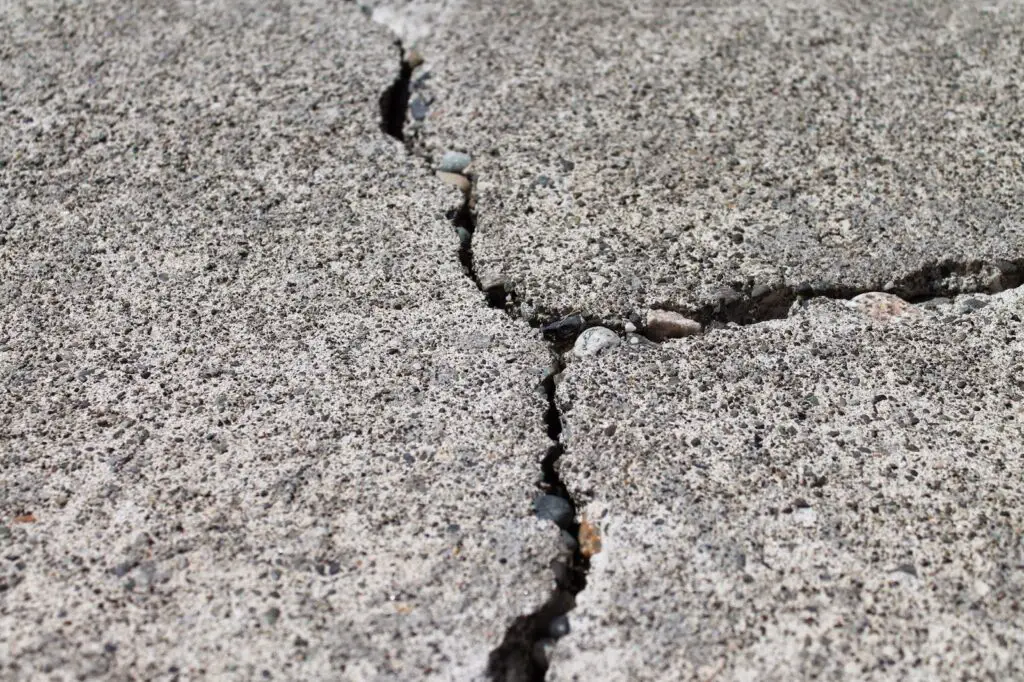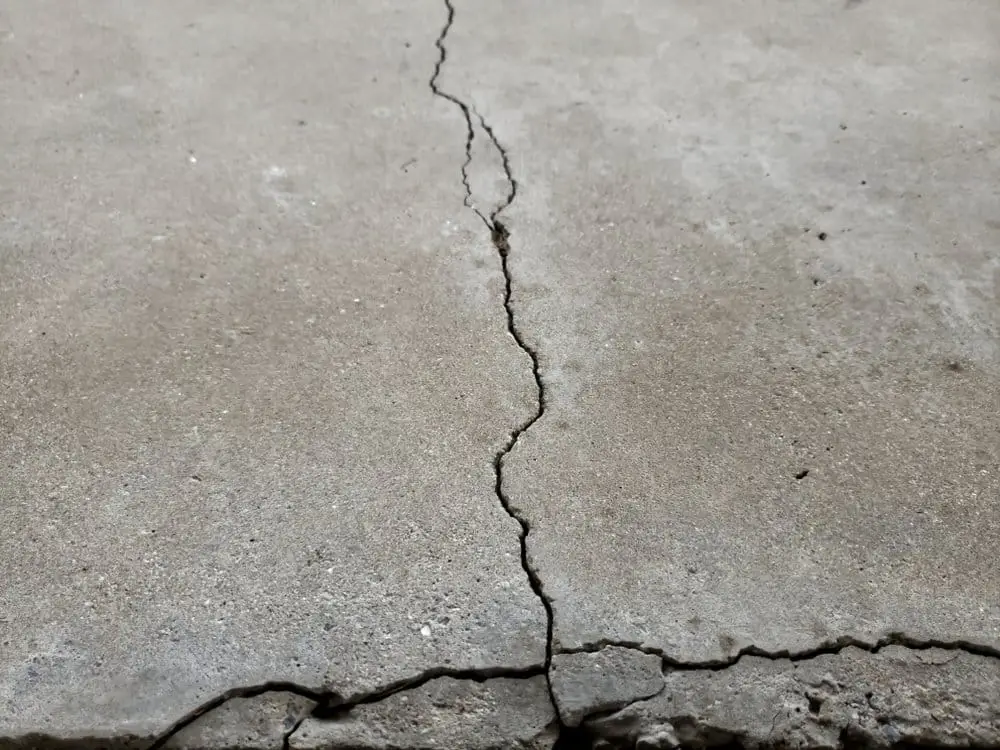How To Fix Cracks In Concrete Patio
Introduction
How To Fix Cracks In A Concrete Patio: A concrete patio is a great addition to any home because it gives you a durable and flexible outdoor area for fun, relaxing, and entertainment. However, cracks can form on the surface over time due to weather conditions and heavy foot traffic, making the patio look worse and compromising its structural integrity. If you don’t fix these cracks, they could get worse, causing more damage that could be expensive to fix. The good news is that fixing cracks in a concrete patio is a simple job that can be done with the right tools and methods.
There are cracks in your concrete outdoor furniture. We will show you how to fix them so that the furniture looks good again and works well for a long time. Before you start the repair process, you need to know the different kinds of cracks that can happen, like hairline cracks, shrinking cracks, and structural cracks. To make sure the repair works and lasts, you need to use a different method for each type.
The things you need to fix cracks are easy to find at most hardware stores, so homeowners with basic handyman skills can do this job themselves. We will talk about the different materials, like concrete patching solutions, epoxy resins, and bonding agents, and explain what they are used for. This will help you choose the best one for your needs.

Should you fill cracks in concrete patio?
Hairline cracks that can only be seen from inside the house or on decks and sidewalks are usually safe and can be filled to keep water from getting in and making the damage worse.
It is important to remember to fill in cracks in a concrete patio as part of regular upkeep. Whether your patio has tiny hairline cracks or larger structural fissures, fixing these problems right away is important to keep the patio’s structure and good looks. Because of these things, you should fill in holes in your concrete patio:
Prevent Further Damage
Cracks, no matter how small, have the potential to worsen over time. Moisture, temperature changes, and foot traffic can cause cracks to expand and deepen. By filling the cracks early on, you prevent them from becoming more significant problems that may require extensive and costly repairs in the future.
Safety Concerns
Larger cracks or uneven surfaces can create tripping hazards, posing a safety risk to you, your family, and guests. Filling the cracks ensures a level and smooth patio surface, reducing the chances of accidents and injuries.
Preserve Aesthetics
Cracks can be unsightly, detracting from the overall appearance of your patio. Repairing the cracks helps maintain a neat and well-maintained outdoor space, enhancing the curb appeal of your home.
Should concrete cracks be repaired?
Cracks that are deep or wider than 1/4 inch generally mean there are bigger problems. There is a way to fill them, but the fix does not last long. Older roads are more likely to have uneven cracks that are more than an inch wide, and these cracks almost always mean that there are problems with the structure underneath.
Fixing concrete cracks at the correct time keeps the structure sturdy and the concrete durable. Despite its strength, concrete can shatter under stress and environmental conditions. Fix concrete cracks for these reasons:
Prevent Further Damage
Cracks, regardless of their size, have the potential to expand and worsen over time. Ignoring small cracks can lead to more significant issues, such as larger cracks or even concrete spalling, where layers of the concrete surface begin to peel off.
Ensure Safety
Cracks in concrete surfaces can pose safety hazards, especially if they are located in high-traffic areas. Uneven surfaces can cause tripping and falling accidents, leading to injuries for pedestrians or users of the space.
Preserve Aesthetics
Cracks in concrete can be ugly and make the surface look worse. Fixing the cracks helps keep the building looking neat and well-kept, whether it’s a driveway, sidewalk, patio, or something else made of concrete.
What is the best repair for cracks in concrete?
Concrete caulk or filler is best for cracks no wider than 1/2 inch. This thick material is injected into the crack with a caulk gun or by directly squeezing it out of the tube. You can use concrete caulk on both vertical or horizontal cracks. Our top pick is Sikaflex Pro Select Self-Leveling Sealant.
The best repair for cracks in concrete depends on the type and severity of the cracks. There are several effective methods and materials to address different types of concrete cracks. Here are some common repair options:
Concrete Patching Compound
For hairline cracks and small surface cracks, a concrete patching compound is an excellent choice. This ready-to-use material is easy to apply and adheres well to the existing concrete, filling the cracks and creating a smooth surface.
Epoxy Injection
Epoxy resin is ideal for structural cracks that need a strong and flexible bond. It involves injecting the epoxy directly into the crack, which not only fills the void but also reinforces the concrete and prevents further cracking.
Concrete Caulking
For wider cracks, concrete caulking can be used. It is a flexible sealant that adheres well to concrete and can handle slight movement in the surface, making it suitable for cracks in driveways, sidewalks, and patios.
Can you fix a crack in a concrete slab?
Concrete patching is usually the best approach to repair and seal big cracks. Cracks under 1/4 inch can be repaired with concrete caulk or liquid filler. Patching solutions are troweled on after being combined with water.
Concrete slab cracks can be repaired. This job is common and doable. The type of crack, its size, and its cause affect how well the repair works. Steps to remedy a concrete slab crack:
Figure out the crack
It’s important to figure out the type of crack and what caused it before trying to fix it. Cracks in concrete slabs can be caused by settling, shrinking, or problems with the structure. Figuring out the type of crack helps you figure out the best way to fix it.
Fix the Crack
Clean the crack and the area around it very well to get rid of dust, dirt, and other small particles. To get a clean and sound surface, use a wire brush, compressed air, or a vacuum.
Pick out the repair stuff
Choose the right fix material based on the type and size of the crack. Patching solutions or concrete caulk may be enough for cracks that are only a few inches wide. Epoxy injection or polyurethane seals might work better for bigger cracks or cracks in the structure.
Does sealing concrete keep it from cracking?
This is especially true if poor site preparation or concrete mixing caused the fissure. Damage that can’t be repaired won’t happen again in the top concrete layer.
Sealing concrete reduces cracks, but they can still occur. Concrete expands and shrinks with temperature and air moisture, among other things. Caulk can prevent cracks, but not always.
This is how you can treat concrete to keep it from cracking:
Keeps water away.
Because it is porous, unfinished concrete can soak up water and other liquids. The water gets bigger when it freezes when it gets cold. This could lead to pressure building up inside the pipe, which would then break. A finish on concrete creates a wall that keeps water from getting in. This lowers the chance of damage from freeze-thaw cycles.
Strength of Chemicals
There are concrete sealers that are chemically resistant. This means that they protect the concrete from things that could react chemically with it and crack or wear down the surface.
Keeping the Surface Safe
Sealing the concrete adds a layer of defense to the surface that keeps it from wearing down or getting scratched.

How do you keep concrete cracks from getting worse?
There’s no way to completely eradicate cracks, but here are 10 ways to minimize these bothersome defects.
- Keep an eye on the temperature.
- Prevent excess water.
- Look into using synthetic micro fibers.
- Brace formwork.
- Use formed joints.
- Explore pre-curing options.
- Provide sufficient concrete cover.
Preventing concrete cracks from getting worse requires proactive maintenance and addressing the underlying causes of the cracks. Here are some essential steps to keep concrete cracks from worsening:
Regular Inspection
Conduct regular inspections of your concrete surfaces to identify any new cracks or changes in existing ones. Early detection allows for timely repairs, minimizing the chances of further deterioration.
Clean the Cracks
Keep the cracks clean and free from debris. Use a wire brush or compressed air to remove dirt, dust, and loose particles from the cracks. This ensures better adhesion of repair materials and prevents the debris from exacerbating the cracks.
Address Water Drainage
Poor water drainage is a common cause of concrete cracks. Ensure that water does not pool or accumulate around the concrete surface. Proper grading and the installation of gutters and downspouts can help divert water away from the concrete.
How long does concrete crack repair last?
Concrete repairs can endure decades if properly put and maintained like ordinary concrete. These long-lasting patches are worth the time and work to maintain your concrete for years.
Concrete crack repair lifespan depends on various aspects, including the restoration method, crack severity and type, material and workmanship quality, and climatic conditions. Here are several concrete crack repair durability factors:
Repair Method
The choice of repair method plays a significant role in determining the repair’s longevity. Epoxy injections and polyurethane sealants tend to offer longer-lasting results for structural cracks, as they create strong bonds and flexible seals. Concrete patching compounds and caulking may be suitable for minor surface cracks, but their lifespan may be shorter.
Severity of Crack
The size and severity of the crack also influence the repair’s lifespan. Smaller hairline cracks that are repaired promptly and properly may last longer than larger cracks that require more extensive repairs.
Quality of Materials
Using high-quality repair materials is essential for long-lasting results. Inferior or low-grade materials may deteriorate faster, leading to the need for re-repairs sooner.
How common is it for concrete to crack?
Actually, concrete cracks are very common, some are even inevitable.
Cracking is a common occurrence in concrete, and it is considered a natural characteristic of the material. Concrete is a rigid construction material that undergoes changes in volume due to factors such as temperature fluctuations, moisture content, drying shrinkage, and external loads. These factors contribute to the formation of cracks over time. Here are some reasons why concrete commonly cracks:
Drying Shrinkage
Concrete undergoes a process called drying shrinkage as it cures and loses moisture. This causes the concrete to contract, resulting in small cracks known as hairline cracks.
Temperature Changes
Temperature variations can cause concrete to expand and contract. During extreme heat or cold, concrete may undergo significant dimensional changes, leading to cracks.
Moisture Changes
Changes in moisture levels in the concrete can cause it to expand or contract, resulting in cracks. Freeze-thaw cycles in colder regions can be particularly problematic.

Conclusion
Repairing cracks in a concrete patio is a task that, with proper guidance and attention, can be successfully accomplished by homeowners. By following the steps outlined in this guide, you can restore the beauty and structural integrity of your concrete patio, ensuring it remains a functional and inviting outdoor space for years to come. Preparation is key to a successful repair. Cleaning the cracks thoroughly, removing debris and loose material, and creating a clean, dust-free surface will enhance the bonding of the repair materials, maximizing their durability.
One of the most critical aspects of crack repair is identifying the type of cracks present, as this determines the appropriate repair approach. Whether dealing with hairline cracks caused by normal concrete shrinkage or more severe structural cracks, understanding the nature of the damage allows for targeted and effective solutions.
By addressing cracks promptly and following the proper repair techniques, you can enjoy a durable and aesthetically pleasing concrete patio for years to come. Remember that preventive maintenance, such as regular cleaning and sealing, can help minimize the occurrence of cracks and keep your patio looking its best. In such cases, it is advisable to consult a concrete specialist or contractor to ensure the appropriate measures are taken.








